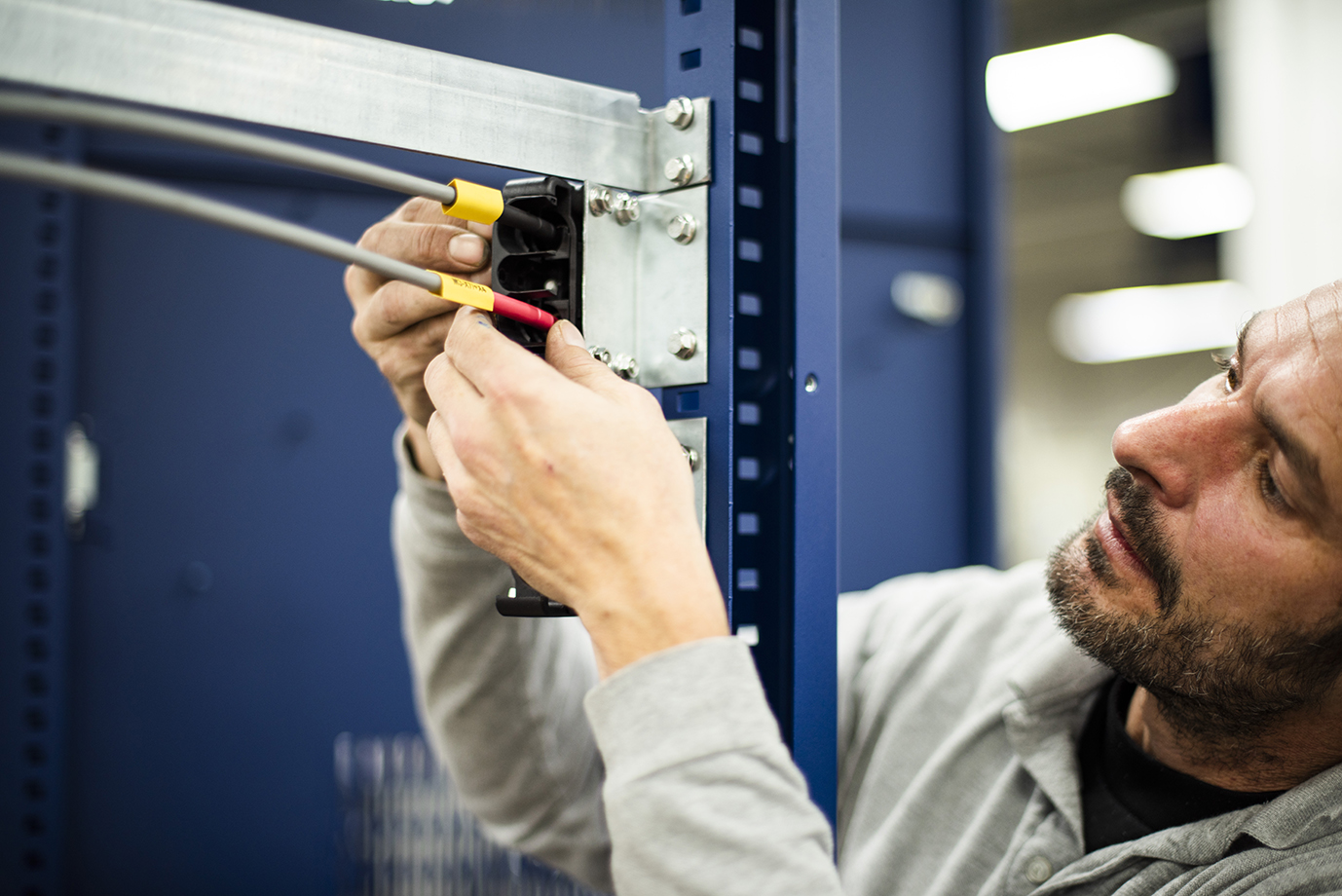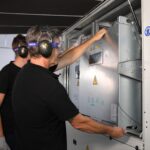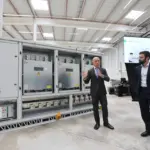On weekdays, high energy demand in the area causes voltage levels to drop and become unstable by the time electricity reaches the end of the line. This results in voltage sags and electrical faults that directly impact production.
However, the situation reverses on weekends. With most factories shut down but their self-consumption systems still generating energy, the surplus electricity is fed back into the grid. Due to the lack of sufficient demand, this results in overvoltages.
In both cases, the quality of the power received by the factory is poor, leading to severe consequences for industrial equipment, whose performance and service life may be compromised.
This issue is not only a technical challenge—it also carries significant economic implications. Weekday voltage sags can lead to unexpected production stoppages, loss of materials in interrupted processes, and accelerated wear of equipment.
On the other hand, weekend overvoltages increase the risk of permanent damage to machinery, which means costly repairs and potentially extended downtime. The combination of both issues reduces operational efficiency and adds uncertainty to production planning.
In electro-intensive industries with technologically advanced and highly sensitive machinery, these problems are a constant source of concern.
Why voltage drops occur at the end-of-line
Power losses in an electrical line are inevitable and occur in any energy distribution system. As electricity travels through the grid, part of it is dissipated as heat due to the resistance of the conductive material. This phenomenon worsens when the distance between the generation source and the consumption point is large, which is common in industrial parks with a high concentration of users.
Voltage drops occur more frequently when electrical demand in the park is high. During peak hours of industrial activity, the grid becomes overloaded, and electricity reaches the end-of-line factories at voltages below the required level.
The issue becomes more severe if the park’s electrical infrastructure was not designed to support current demand or lacks proper voltage regulation systems. As a result, industrial machinery—especially precision or highly automated equipment—may experience operational failures, reduced efficiency, and accelerated wear of electrical components.
In some cases, these issues can be partially resolved by upgrading the park’s electrical infrastructure or installing higher-capacity transformers. However, for many companies, this is not feasible in the short term, so the solution lies in deploying voltage stabilization and compensation systems that ensure a stable power supply within their facilities.
The problem of overvoltages on Weekends
While weekdays present challenges due to poor power quality caused by voltage sags, on weekends, end-of-line factories face the opposite problem: overvoltages. As many industries halt production, energy demand drops sharply. However, self-consumption systems—such as industrial solar panels—continue to generate electricity. The surplus is injected into the grid, leading to increased voltage levels that can be particularly pronounced at the far ends of the distribution line.
Overvoltages can be especially harmful to electronic equipment and automation systems, which are designed to operate within specific voltage ranges. When these limits are exceeded, components may overheat, suffer internal damage, or fail entirely. Additionally, higher grid voltage leads to increased energy losses in transformers and distribution lines, further reducing overall system efficiency.
This issue has intensified in recent years due to the growth of industrial self-consumption and distributed generation. Many power grids have not yet been adapted to handle large-scale bidirectional energy flows, meaning they are not equipped to efficiently absorb electricity generated by factories during periods of low demand. Without proper solutions, this phenomenon will continue to worsen as more industries adopt renewable energy systems.
Tecnological solutions to stabilize Power Quality
To ensure a stable and reliable power supply, end-of-line factories must adopt technological solutions that mitigate both voltage drops and overvoltages.
One of the most effective systems to combat voltage sags is the ZGR AVC DVR (Dynamic Voltage Restorer), a device designed to instantly compensate for voltage fluctuations and protect industrial production processes. This equipment eliminates voltage dips of up to 70% depth, stabilizing the output voltage so that machinery can operate without interruptions. Its continuous regulation system keeps voltage within optimal margins, and its efficiency of over 98% makes it a highly effective and cost-efficient solution. Additionally, it operates without batteries, reducing installation space and maintenance costs.
For industries requiring complete protection against voltage interruptions and variations, the ZGR DVC SEPEC is another alternative. This system functions as an industrial UPS capable of eliminating voltage dips, short interruptions, and frequency fluctuations, ensuring operational continuity of critical processes. Its modular design simplifies maintenance, and its compatibility with backup generators makes it a comprehensive solution for electrical supply stability.
Energy storage systems to prevent overvoltages
To manage issues arising from excess energy injection and overvoltages, the best option is to implement energy storage systems—either at the industrial park’s substation or within the affected factory itself.
The ZGR PCS 3000 is an advanced solution that enables bidirectional energy flow control, absorbing surplus power and relieving stress on the electrical grid. By incorporating this type of technology, industries can optimize the integration of their renewable sources, reduce energy losses, and minimize overvoltage risks to their equipment.
An integrated approach to Power Quality
The problem of power quality in end-of-line industries has no single cause and no simple fix. However, with the right combination of voltage stabilization, protection against electrical disturbances, and energy storage, it is possible to mitigate its effects and ensure a safe, efficient production environment.
If your factory is located at the end of the line and suffers from voltage drops or overvoltages, you don’t have to accept economic losses and production failures.
At ZGR Corporación, we design solutions tailored to each industry.
At ZGR Corporación, we design solutions tailored to each industry.
Would you like us to help stabilize your energy supply?. Contact us—we love to share our knowledge and over three decades of know-how helping companies manage their electrical energy efficiently and holistically.
Interested in power electronics? Join our growing LinkedIn Community and stay connected.






